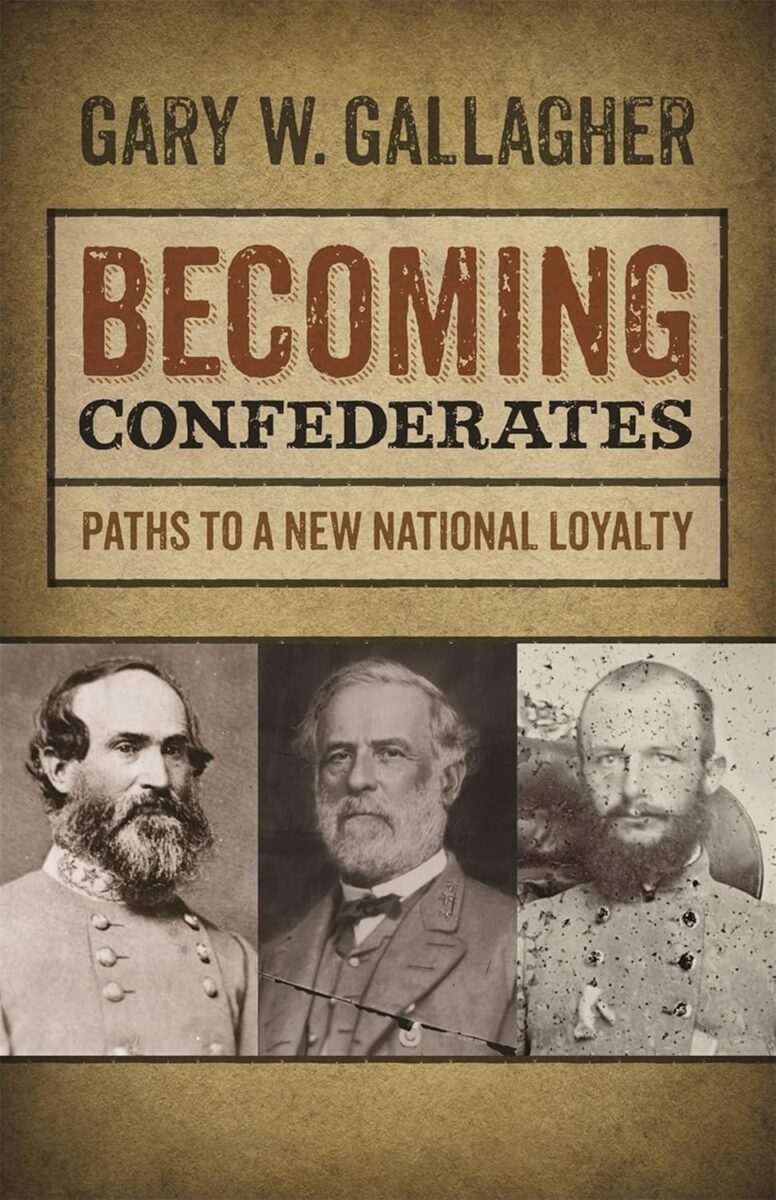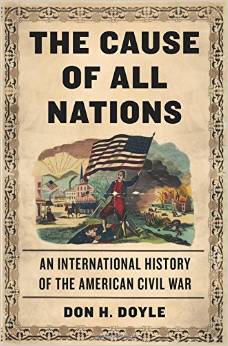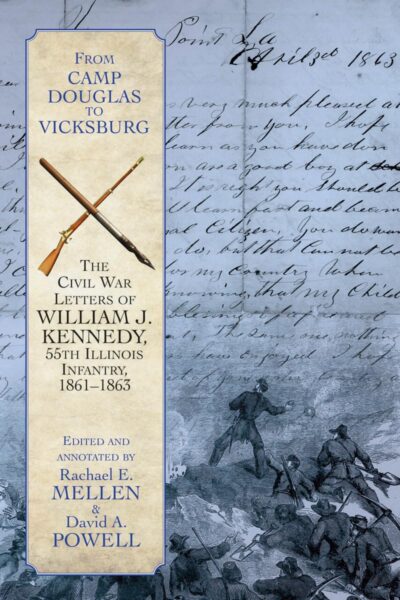Much of the work of the historian comes down to explaining what drove historic actors to behave as they did. For Civil War historians the questions are unusually thorny, and the scholarship particularly rich. Today we have some sense of how the interplay of culture, religion, economics. race, class, age, gender, and – of course – political ideology, all shaped events and motivated groups of individuals before, during and after the war. In For Cause and Comrades, celebrated Civil War historian James M. McPherson offered an analysis of the forces motivating individual soldiers, arguing that those factors which drove a man to enlist or to remain in uniform may well have differed substantially from the considerations that led that same man to charge an entrenched enemy across an open field.
In this slim volume, based upon his 2011 Lamar Lectures delivered at Mercer University, Gary W. Gallagher offers major new insights into how we should understand the Civil War soldier and his core motivations. Gallagher has already had much to say about the central ideas that guided the Civil War generation. In The Confederate War he made a strong case that Confederates developed a powerful sense of nationalism, which undergirded a vibrant war effort. More recently, in The Union War, Gallagher emphasized the centrality of the idea of Union in driving northerners into war and shaping their continued commitment to their national military effort. Both books portray individuals committed to large national causes, suggesting important ideas about the nature of patriotic motivations in wartime. With Becoming Confederates, Gallagher presents a more nuanced approach for understanding what drove individual behavior.
At one level, Gallagher offers valuable interpretive capsule biographies of the lives of three celebrated Confederate officers: Robert E. Lee, Stephen Dodson Ramseur, and Jubal A. Early. Even readers familiar with all three men will find new nuggets in each chapter. But in a broader sense, Becoming Confederates proposes a template for assessing the behavior of the Civil War participants, both military and civilian. Borrowing key insights from historian David Potter, Gallagher builds his analysis from the deceptively simple observation that every individual “possesses numerous overlapping and often mutually reinforcing loyalties, with different ones emerging as most important at various times.” The key point here is that “loyalty” is not an absolute, where each individual must be understood as loyal to just one entity or idea. The challenge, then, is to untangle the diversity of loyalties that might have competed for one person’s attention at any particular moment.
For Gallagher, Confederate officers are best understood as having four prime loyalties, that were often complementary and sometimes in conflict: loyalty to their home state; loyalty to the nation; loyalty to the slave-holding white South; and loyalty to the Confederacy. He argues, further, that a close reading of an officer’s correspondence and other writings can give us a good sense of how these various loyalties stacked up at any particular moment, revealing how even when particular loyalties persisted, the relative weight given to each might have been quite fluid. Becoming Confederates is thus both an inquiry into the thoughts and priorities of three fascinating fellows, and a model for how to think about loyalty more broadly.
Most readers of Civil War Magazine probably have a sense of Robert E. Lee’s passionate, and sometimes conflicting, loyalties. In the Spring of 1861 Lee, famously, had to choose between his sworn loyalty to the United States and his deep commitment to his home state. Here Gallagher is happy to affirm the familiar narrative: in those crucial weeks Lee’s loyalty to Virginia was paramount despite his national allegiance. But Gallagher also notes that this state loyalty aligned nicely with Lee’s profound loyalty to the slave-holding white South, and his deep conviction that the protection of the South’s peculiar institution was vital to maintaining racial order. Moreover, as the war progressed Lee became a staunch Confederate nationalist and a bitter enemy of the Federal government, rather than simply a loyal Virginian thrust by circumstances into a Civil War. He routinely favored the imposition of federal power on the individual states, and as the war progressed Lee grew increasingly bitter towards his foe to the North.
Stephen Dodsen Ramseur, the North Carolinian who fell at Cedar Creek in 1864, presents a useful counterpoint to Lee. One of the South’s young firebrands before and during the sectional conflict, Ramseur’s declared loyalty to the United States and to the Old North State – both of which he surely felt – always took a back seat to his loyalty to the slaveholding South, and they easily gave way to a passionate commitment to the Confederacy. In broad strokes, Lee and Ramseur arrived at similar places, but the young North Carolinian had an easier path to his complete devotion to the Confederacy. Like many in his cohort, Ramseur was quick to embrace a Confederate nationalism that fulfilled his loyalty to the white slaveholding South.
Gallagher completes his Confederate trio with the Jubal Early, the fascinating Virginia officer whose many loyalties eventually included a passionate commitment to the memory or Robert E. Lee. Early, a man with a deep respect for the Constitution, found secession and the outbreak of war a particular challenge to his multiple loyalties. As Gallagher explains, Early’s political conservativism had commonly put him at odds with his peers, yet he embraced the notion of “patriotic submission” to democratic decisions that were not of his choosing. Thus, the secession crisis found Early defending the legitimacy of the United States against the firebrands in his midst, but when he lost that debate the loyal Virginian submitted to the forces of secession. Like Ramseur and Lee, Early’s emerging loyalty to the Confederacy was assisted by his strong commitment to the institution of slavery as the best way of controlling the South’s African American workforce. And, like Lee, Early grew increasingly convinced that the Lincoln Administration’s actions had betrayed the Constitution, effectively undoing his past loyalty to the United States.
All three men became ardent Confederate nationalists, with a loyalty to the new nation that effectively trumped their continued loyalty to their home states. Certainly the path to Confederate loyalty was eased by their shared devotion to the white South, and the conviction that slavery was a necessary component of the region’s stability and prosperity. What became of that national loyalty when the Confederacy ceased to exist? Gallagher rejects the popular – and comfortable – image of the Virginian Lee as the gracious loser, peacefully embracing the verdict of the battlefield. Instead, Gallagher sees Lee as a “situational reconciliationist” who exercised dignified restraint, but never really forgave his enemies or forgot his Confederate comrades. In the postwar year’s Lee’s prime loyalties were to his home state and to the white South, rather than two either of the nations he had served in uniform. Early, in contrast, remained an ardent Confederate nationalist to his dying day. As Gallagher notes, the alignment of Early’s loyalties might have changed over time, but his core commitments – to the Constitution, to white supremacy, to slavery – remained largely unchanged.
As Gallagher sees it, both celebrated Virginians (and no doubt Ramseur as well, had he survived) remained loyal to the fundamental idea that secession was just, slavery was the best system for the South, and the Confederacy had been a noble cause. Circumstances required that most ex-Confederates embrace some form of reunion, but in many cases true “reconciliation” would have been too much to ask. In this sense, postwar events underscored the fundamental strength of the Confederacy as a true nation. And the ways that Americans navigated the decades of war and then peace illustrate the complexity of multiple, often conflicting, loyalties as they emerged and shifted in a changing political and cultural landscape.
Matt Gallman is a Professor of History at the University of Florida and most recently the author of A Tour of Reconstruction.





